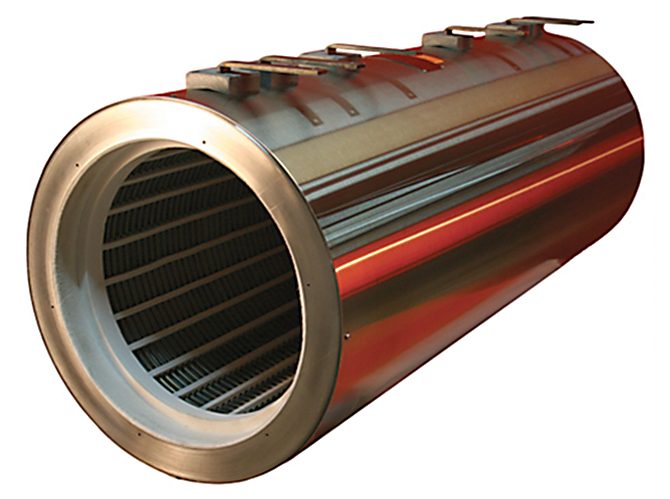
Thermcraft Incorporated manufacturers high-quality thermal processing equipment. The international company manufactures low and high temperature laboratory furnaces, production furnaces, vacuum formed ceramic fiber heaters, cast heaters, heater coils, air heaters, ovens, kilns and diffusion heaters.
Diffusion is the process of molecules moving from an area of high concentration to a low one. It occurs routinely within and between liquids, gases, and solids in daily life. This process is exploited by diffusion furnaces, which elevate the temperature of workpieces and introduce gaseous elements to encourage solid state diffusion.
Solid state diffusion occurs when molecules of a substance mix with a host solid at the atomic level. This mechanism of diffusion was a scientific curiosity for many years but has since become an integral process in semiconductor manufacturing.
A diffusion furnace is a thermal processing unit with a cylindrical heating chamber that can be oriented either horizontally or vertically. This enables circular workpieces to be processed with outstanding thermal uniformity due to the equidistant surfaces radiating heat. They can also function under partial vacuum conditions to ensure tight atmospheric control throughout operation. This is critical in ensuring optimal conditions for the vapor-phase to diffuse into the solid-state semiconductor without introducing undesirable impurities.
When a semiconductor wafer is treated in a diffusion furnace, it is heated to within a setpoint temperature and subjected to a flow of gaseous molecules known as the vapor-phase. This phase diffuses into the solid substrate at the atomic level, a process known as doping.
Semiconductors such as silicon (S) display unique electronic properties between those of an insulator and a conductor. Dopants are introduced to modulate those electronic properties and make them suitable for semiconductor device fabrication. They diffuse into the crystal lattice and become immobilized within the atomic structure, creating either an excess or deficiency of electrons or electron holes. This is what alters the conductivity of the semiconducting wafer.
Elements such as phosphorous (P) are commonly used to increase the number of free electrons in the wafer’s atomic structure, creating what is known as an n-type semiconductor. Conversely, gallium (Ga) can be used to introduce an electron acceptor that creates extra electron-hole energy levels. This is an n-type semiconductor.
The functional differences between n- and p-type semiconductors are myriad, as are the chemical variations currently used and under exploration as dopants for intrinsic semiconductors. To learn more about how diffusion furnaces are used for electronics manufacturing, read Thermcraft Inc.’s previous blog post: “Using an Industrial Furnace for Semiconductor Device Fabrication.”
Thermcraft specializes in the development of thermal insulation and circular heating elements for diffusion furnaces. It provides collars, discs, and vestibule blocks comprised of ceramic fiber packed with braided silica, which can be sized and shaped to distinct customer specifications. These are suitable for the extremely high operating temperatures of various diffusion furnace processes.
All offerings are custom designed to meet customers’ thermal requirements.
MORE INFO www.thermcraftinc.com























